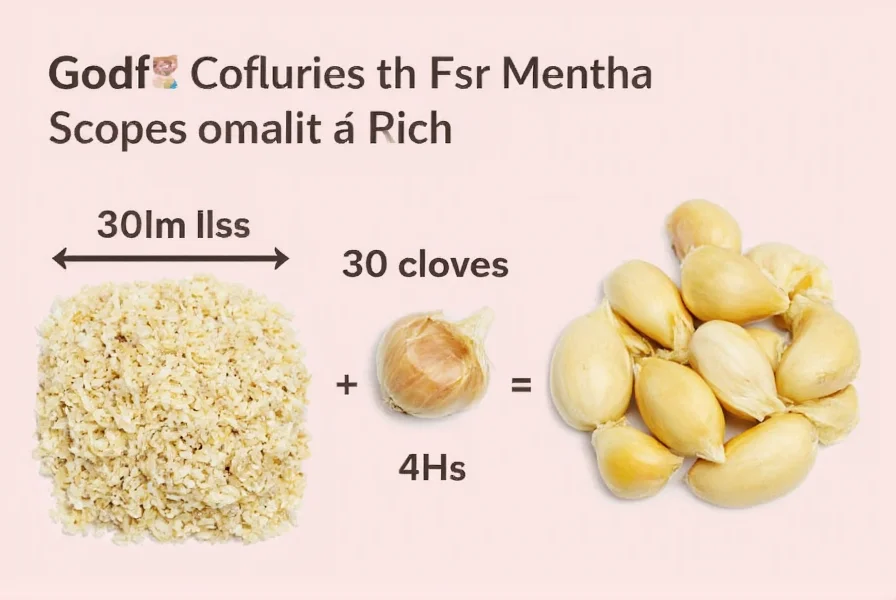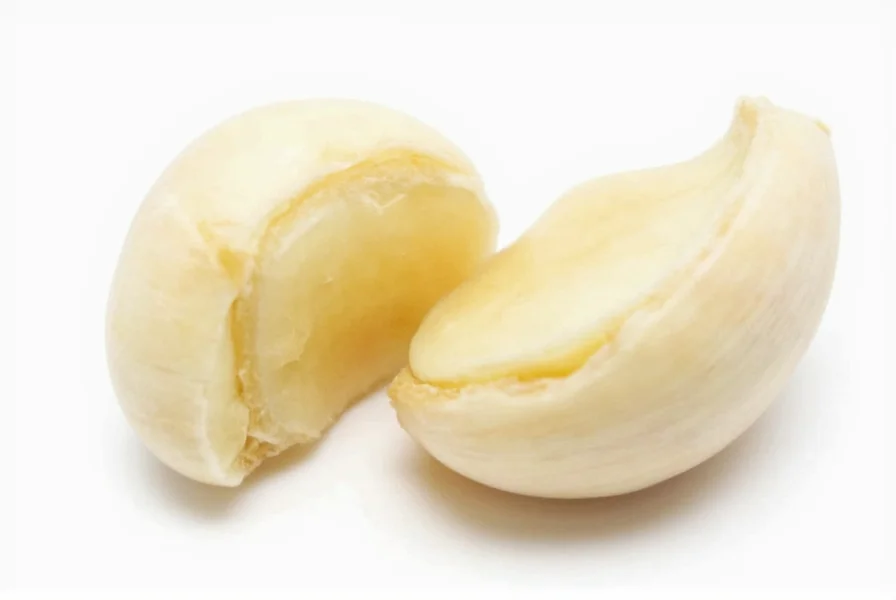When following recipes that specify garlic in cloves rather than measurements, understanding precise conversions becomes essential for achieving the perfect flavor balance in your dishes. This guide provides accurate measurements, practical conversion charts, and professional cooking tips to help you navigate garlic measurements with confidence.
Understanding Garlic Measurements
Garlic measurements can be confusing when recipes switch between whole cloves and prepared forms. The standard conversion for how much is 2 cloves of minced garlic serves as a fundamental kitchen reference that every home cook should know. While the basic conversion is straightforward, several factors affect the precise measurement.
Factors Affecting Garlic Measurements
Garlic cloves vary significantly in size, which directly impacts your final measurement. A single garlic clove can range from:
- Small cloves: About ¼ inch in diameter
- Medium cloves: Approximately ½ inch in diameter
- Large cloves: Up to ¾ inch or more in diameter
When determining how many tablespoons is 2 cloves of minced garlic, remember that two small cloves will yield less minced garlic than two large cloves from the same bulb. This natural variation explains why professional recipes often specify both clove count and volume measurements.
| Number of Cloves | Minced Garlic Measurement | Tablespoon Equivalent |
|---|---|---|
| 1 small clove | 1½ teaspoons | ½ tablespoon |
| 1 medium clove | 2 teaspoons | ¾ tablespoon |
| 1 large clove | 2½ teaspoons | 1 tablespoon |
| 2 small cloves | 3 teaspoons | 1 tablespoon |
| 2 medium cloves | 4 teaspoons | 1¼ tablespoons |
| 2 large cloves | 5 teaspoons | 1½ tablespoons |
Practical Measurement Techniques
When working with fresh garlic, proper measurement techniques ensure recipe success. For the most accurate results when converting 2 cloves garlic minced equals how much, follow these professional kitchen practices:
First, mince the garlic thoroughly using a sharp knife or garlic press. Then, use a dry measuring spoon to scoop the minced garlic, leveling it off with the back of a knife for precision. Avoid packing the garlic tightly unless your recipe specifically calls for it.

Garlic Substitutions and Equivalents
Understanding garlic conversions extends beyond fresh cloves. When your recipe calls for how much minced garlic equals one clove but you're using alternative forms, these conversions prove invaluable:
- 1 clove fresh garlic = ¼ teaspoon garlic powder
- 1 clove fresh garlic = ½ teaspoon garlic granules
- 1 clove fresh garlic = 1½ teaspoons garlic paste
- 1 clove fresh garlic = 1 teaspoon jarred minced garlic
When substituting, remember that processed garlic products often have more concentrated flavor than fresh garlic. For the question 2 cloves of minced garlic equals how much in powder form, you would use approximately ½ teaspoon of garlic powder.
Culinary Applications and Precision
The importance of accurate garlic measurement varies by dish. In delicate sauces or dressings, precise measurements of how many tablespoons is 2 cloves of minced garlic significantly impact flavor balance. However, in robust stews or braises, slight variations matter less as flavors meld during cooking.
Professional chefs often recommend tasting as you go when working with garlic. Start with the standard conversion of 2 cloves equaling 2 teaspoons minced, then adjust according to your taste preferences and the specific garlic's potency.

Storage and Freshness Considerations
Freshness affects garlic's potency and, consequently, your measurements. Older garlic loses some of its pungency, meaning you might need slightly more to achieve the same flavor impact. When working with pre-minced garlic from a jar, remember that preservatives can alter both flavor and measurement requirements compared to freshly minced garlic.
For optimal results when calculating garlic clove to teaspoon conversion, use fresh garlic whenever possible. Store whole bulbs in a cool, dark place with good air circulation, and only mince what you need for immediate use to preserve maximum flavor.
Common Measurement Mistakes to Avoid
Many home cooks make these common errors when measuring garlic:
- Confusing tablespoons with teaspoons in conversions
- Packing minced garlic too tightly into measuring spoons
- Not accounting for size variations between cloves
- Using dried garlic products without adjusting for potency differences
- Measuring whole cloves instead of minced when a recipe specifies prepared garlic
When determining how much is 2 cloves of minced garlic for your specific recipe, always consider these factors to achieve the best possible results in your cooking.
How many teaspoons is 2 cloves of minced garlic?
Two medium-sized cloves of minced garlic typically equal 4 teaspoons (approximately 1¼ tablespoons). Small cloves yield about 3 teaspoons, while large cloves can produce up to 5 teaspoons of minced garlic.
Can I use jarred minced garlic instead of fresh cloves?
Yes, you can substitute jarred minced garlic for fresh. As a general rule, 1 teaspoon of jarred minced garlic equals one medium fresh garlic clove. However, jarred garlic often has a milder flavor, so you may need to adjust the quantity to achieve your desired taste.
How much garlic powder equals 2 cloves of fresh garlic?
Approximately ½ teaspoon of garlic powder equals 2 medium cloves of fresh garlic. Remember that garlic powder has a more concentrated flavor than fresh garlic, so start with less and adjust to taste.
Does the size of garlic cloves really matter in recipes?
Yes, garlic clove size significantly impacts measurement. A single large clove can contain as much as two small cloves. For precise recipes, especially in baking or delicate sauces, measuring the actual minced quantity rather than counting cloves produces more consistent results.
How can I tell if I've added too much garlic to a dish?
Over-garliced dishes often have an overpowering sharpness that dominates other flavors. If you've added too much garlic, you can balance it by increasing other ingredients proportionally, adding dairy (like cream or yogurt), or incorporating acidic elements (like lemon juice) to counter the intensity.










 浙公网安备
33010002000092号
浙公网安备
33010002000092号 浙B2-20120091-4
浙B2-20120091-4